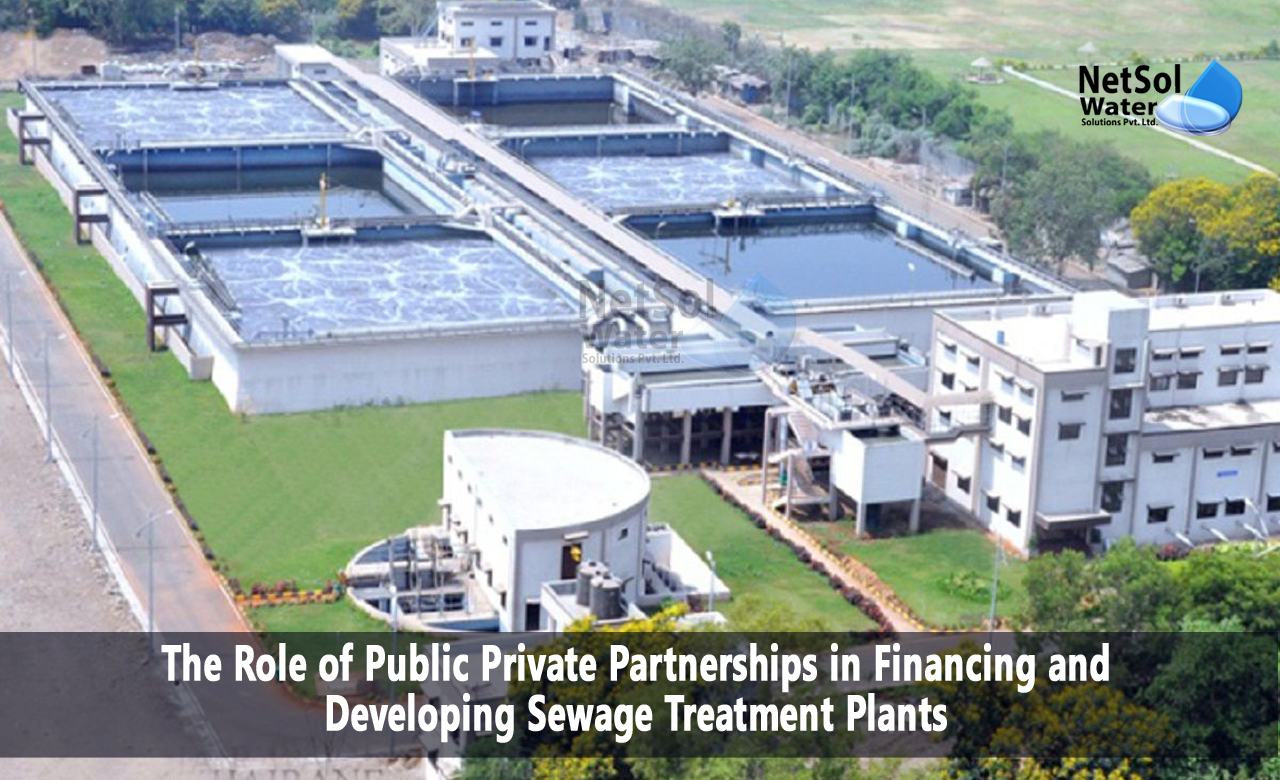Role of Public-Private Partnerships in Financing and Developing STP
Sewage treatment plants are an essential component of urban infrastructure, playing a critical role in protecting public health and the environment. However, the financing and development of these plants can be a complex and expensive process, often requiring significant investment from both the public and private sectors. In recent years, public-private partnerships (PPPs) have emerged as an effective way to finance and develop sewage treatment plants, bringing together the resources and expertise of both sectors to achieve common goals.
In this blog, we will discuss the role of public-private partnerships in financing and developing sewage treatment plants.
Introduction to Public-Private Partnerships:
A public-private partnership (PPP) is a contractual arrangement between a public entity and a private company or consortium that involves the financing, design, construction, operation, and maintenance of a public infrastructure project. PPPs are typically used in sectors such as transportation, energy, water, and wastewater, where the private sector can bring in capital, expertise, and efficiency to supplement the public sector's resources.
Benefits of PPPs in Sewage Treatment Plants:
PPPs can offer several benefits in financing and developing sewage treatment plants, including:
1. Increased efficiency: PPPs can bring in private sector expertise and efficiency, leading to better project management, cost optimization, and performance.
2. Reduced financial risk: PPPs can shift some of the financial risk associated with project development and operation to the private sector, reducing the burden on public finances.
3. Faster project delivery: PPPs can accelerate project delivery by leveraging the private sector's resources, expertise, and access to financing.
4. Improved service quality: PPPs can ensure the long-term sustainability and performance of sewage treatment plants by incorporating performance-based contracts, ensuring accountability, and promoting innovation.
Types of PPP Models:
There are several types of PPP models that can be used in financing and developing sewage treatment plants, including:
1. Design-build-operate (DBO): Under this model, a private sector partner is responsible for designing, constructing, and operating the sewage treatment plant for a fixed period, typically 20-30 years. The private partner bears the risk associated with design and construction, while the public partner retains ownership of the asset.
2. Build-operate-transfer (BOT): Under this model, a private partner is responsible for financing, designing, constructing, and operating the sewage treatment plant for a fixed period, typically 20-30 years. Once the contract ends, ownership of the asset is transferred back to the public partner.
3. Design-build-finance-operate (DBFO): Under this model, a private partner is responsible for designing, constructing, financing, and operating the sewage treatment plant for a fixed period, typically 20-30 years. The private partner bears the risk associated with design, construction, and financing, while the public partner retains ownership of the asset.
4. Lease: This model involves the private sector partner leasing the plant from the public partner for a specified period and operating it for a fee. The public partner retains ownership of the plant and assumes most of the financial risk associated with the project.
Key Considerations in PPPs for Sewage Treatment Plants:
When considering a PPP for sewage treatment plant financing and development, there are several key factors to consider, including:
1. Project feasibility: The project must be technically, economically, and financially feasible, and must offer clear benefits to both the public and private partners.
2. Risk allocation: The allocation of risks between the public and private partners must be clear, fair, and transparent, and must reflect the strengths and capabilities of each partner.
3. Legal and regulatory framework: The legal and regulatory framework must be clear, stable, and conducive to private sector investment, and must provide a level playing field for all potential bidders.
4. Financial sustainability: The project must be financially sustainable over the long term, with clear revenue streams, cost recovery mechanisms, and risk mitigation strategies in place.
Conclusion:
Public-private partnerships can play a crucial role in financing and developing sewage treatment plants, bringing together the resources and expertise of both sectors to achieve common goals. PPPs can offer several benefits, including increased efficiency, reduced financial risk, faster project delivery, and improved service quality. However, the success of PPPs depends on several key factors, including project feasibility, risk allocation, legal and regulatory framework, and financial sustainability. With careful planning and implementation, PPPs can be an effective tool for addressing the global challenge of sewage treatment and water pollution.
For any other support, inquiries, or product purchases, call on +91-9650608473 or email at enquiry@netsolwater.com



